Over the last few years, Fender has answered the calls of its fans and released more affordable versions of its Acoustasonic Telecaster. But how do the ‘Player II’ and the new ‘Standard’ model stack up against their American-crafted counterpart? That’s what we’re about to find out…
It’s fair to say that when Fender launched their American Acoustasonic Telecaster at the 2018 NAMM Show, it polarised the guitar community. Some people loved it; some people hated it. But in the time since, many initial pessimists have warmed to its looks and innovative hybrid design. We don’t think that even the most cynical of players can deny just how clever and versatile the instrument is!
Fender has since expanded its American Acoustasonic series with Strat and Jazzmaster-shaped variants. These each boast unique features of their own, which set them apart from the original Telecaster model. But while introducing these guitars improved variety within the range, none of them were any cheaper than the Tele. This means that they may have still put off partially-interested customers who couldn’t justify spending that much money — especially on guitars that are so quirky.
Step forward the Mexican-made Fender Acoustasonic Player II Telecaster. Released in 2024, the Player II Telecaster is practically identical to the USA model, and, at about 2/3rds the price, it’s far more accessible. But this guitar isn’t just for budget-conscious fans of the American Acoustasonic Tele. That’s because Fender aspired to draw a new audience with it; those after the ultimate “sonic shape-shifter”.
Now, with the 2025 unveiling of Fender’s latest, Indonesian-made, Acoustasonic Standard model Telecaster, purchasers have more choice than ever. Coming in at around £200 cheaper than the Player II, the Standard Telecaster offers the same quality and tone, with the same heritage, at an even more affordable price.
So apart from their cost and country of manufacture, what else marks these instruments apart?
Body
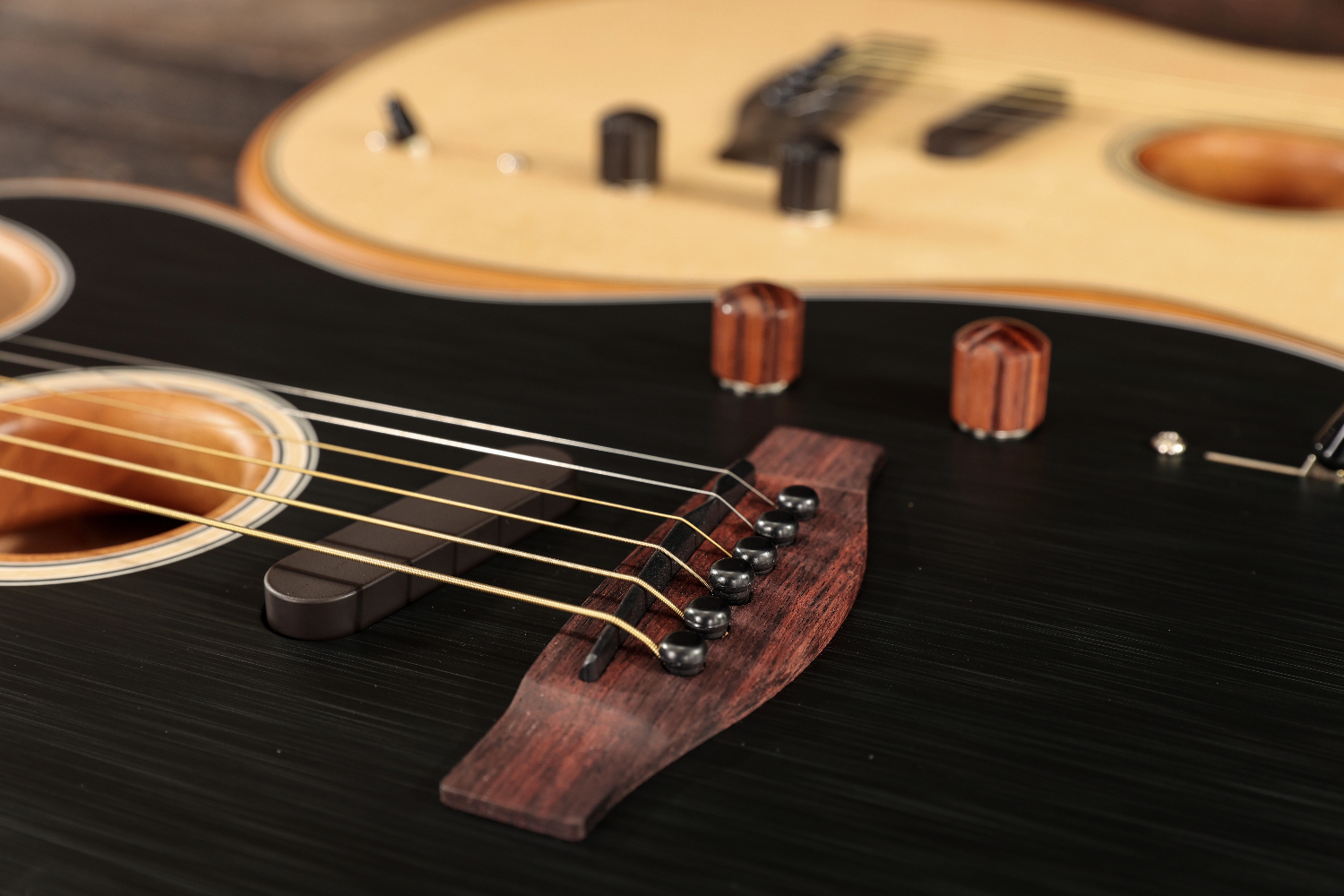
| American | Player II | Standard |
| Mahogany with Solid Sitka Spruce Top | Mahogany with Solid Sitka Spruce Top | Poplar |
Both the American and Player II Acoustasonic Telecasters feature mahogany bodies with solid sitka spruce tops. This timeless tonewood combination yields a vibrant character and response. The Standard’s poplar body offers a balanced tone and does weigh less, which is a factor you may wish to take into consideration. Overall, it’s a matter of preference rather than quality.
All three feature the Deep “C” neck profile, designed to deliver both comfort and speed; slim at the nut and filling out gradually as you approach the neck joint. Both the American and Player II Acoustatonics feature tuned soundholes — a “waterfall” design which controls flow of air into the body, amplifying the natural acoustic sound.
Pickups
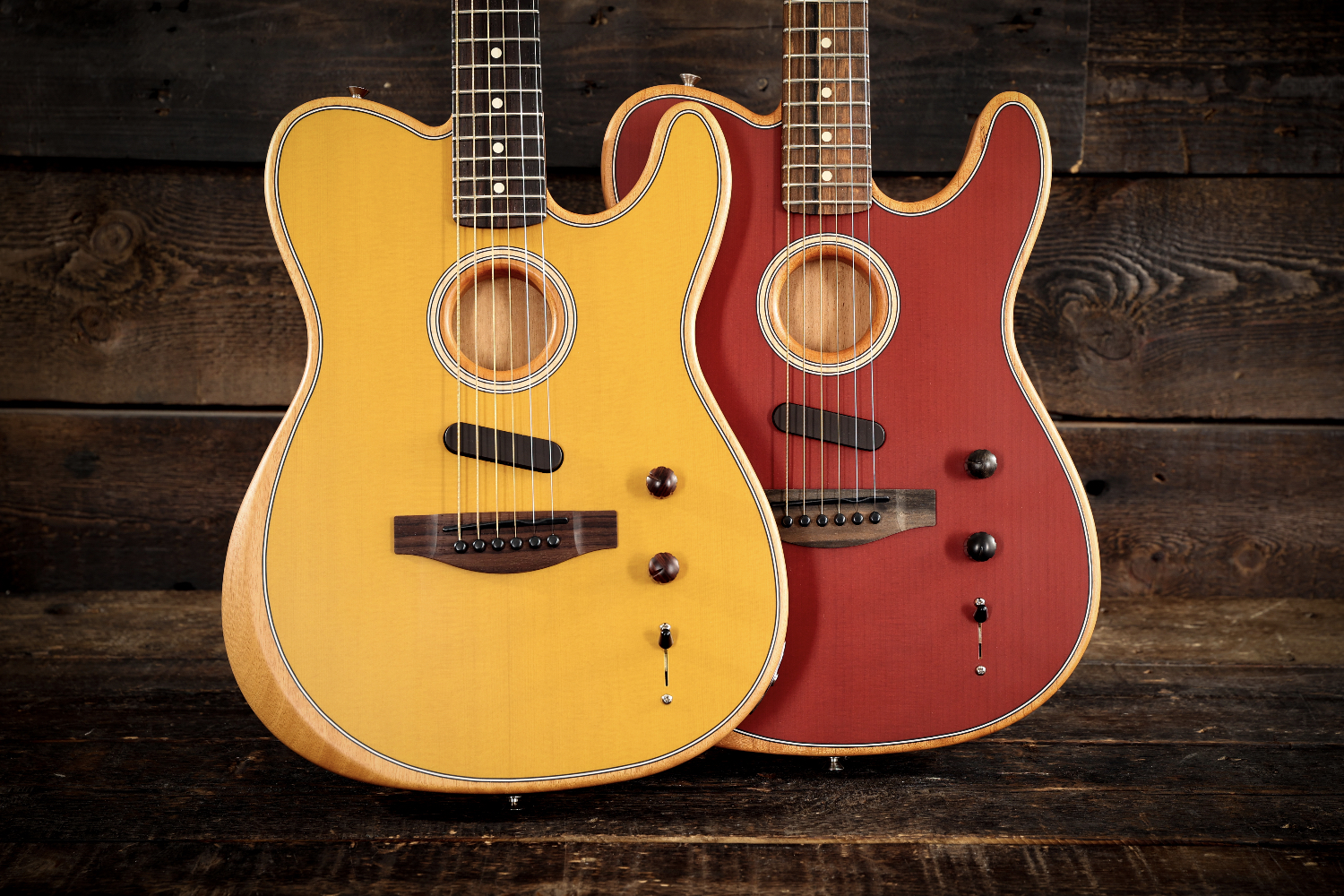
| American | Player II | Standard |
| 3-pickup configuration: Under-Saddle Piezo/Internal Body Sensor/N4 Magnetic | 2-pickup configuration: Under-Saddle Piezo/N4 Magnetic | 2-pickup configuration: Under-Saddle Piezo, Acoustasonic Shawbucker Magnetic |
American
One of the coolest things about the Fender American Acoustasonic Tele is its 3-pickup system. Designed by Fender and Fishman, this comprises a Tim Shaw-designed noiseless N4 single-coil for authentic Fender electric tones free of hum, a Fishman under-saddle piezo system that captures the acoustic string vibrations, and an internal body sensor that adds warmth and “woodiness” into the sonic mix. These elements all work together to optimise the guitar’s natural sound and deliver the curated collection of electric/acoustic voices.
Player II
The Fender Acoustasonic Player Tele features the same noiseless N4 single-coil and Fishman piezo system, but does not have the body sensor. This means that it loses a little bit of the harmonic breadth of its US-crafted cousin, particularly when it comes to the straight acoustic sounds. But with the same body construction, there’s not much of an audible difference.
Standard
The Standard Acoustasonic Telecaster uses the same under-saddle Piezo system and, like the Player II, omits the internal body sensor. The main difference comes via the Standard’s ceramic pickups. While ceramic pickups offer a clear, bright, and punchy output, they lack some of the warmth and subtlety of expression conjured up by the Alnico pickups found in its more expensive cousins.
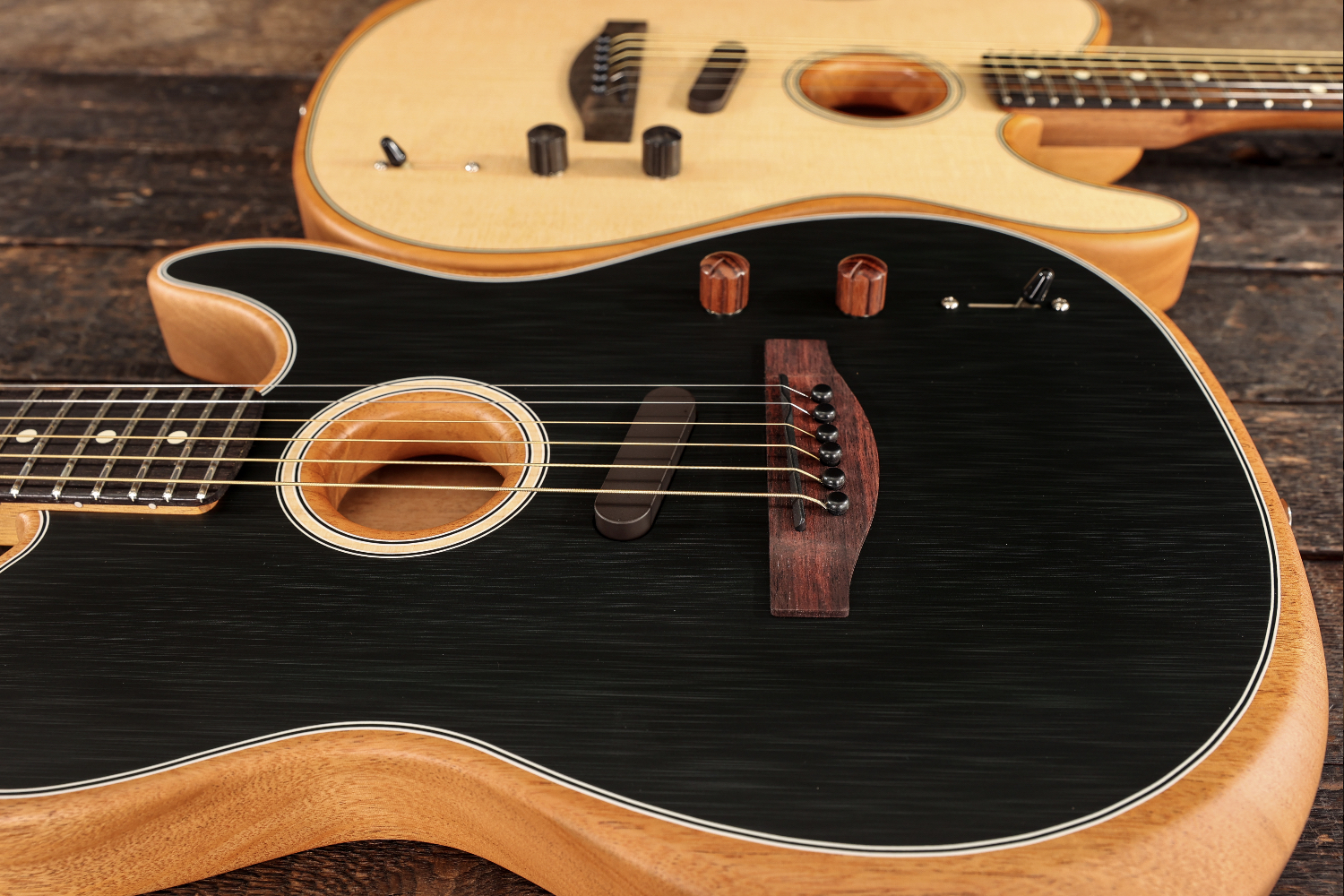
Switching & Voices
| American | Player II | Standard |
| 5-Way Switch / 10 Voices | 3-Way Switch / 6 Voices | None |
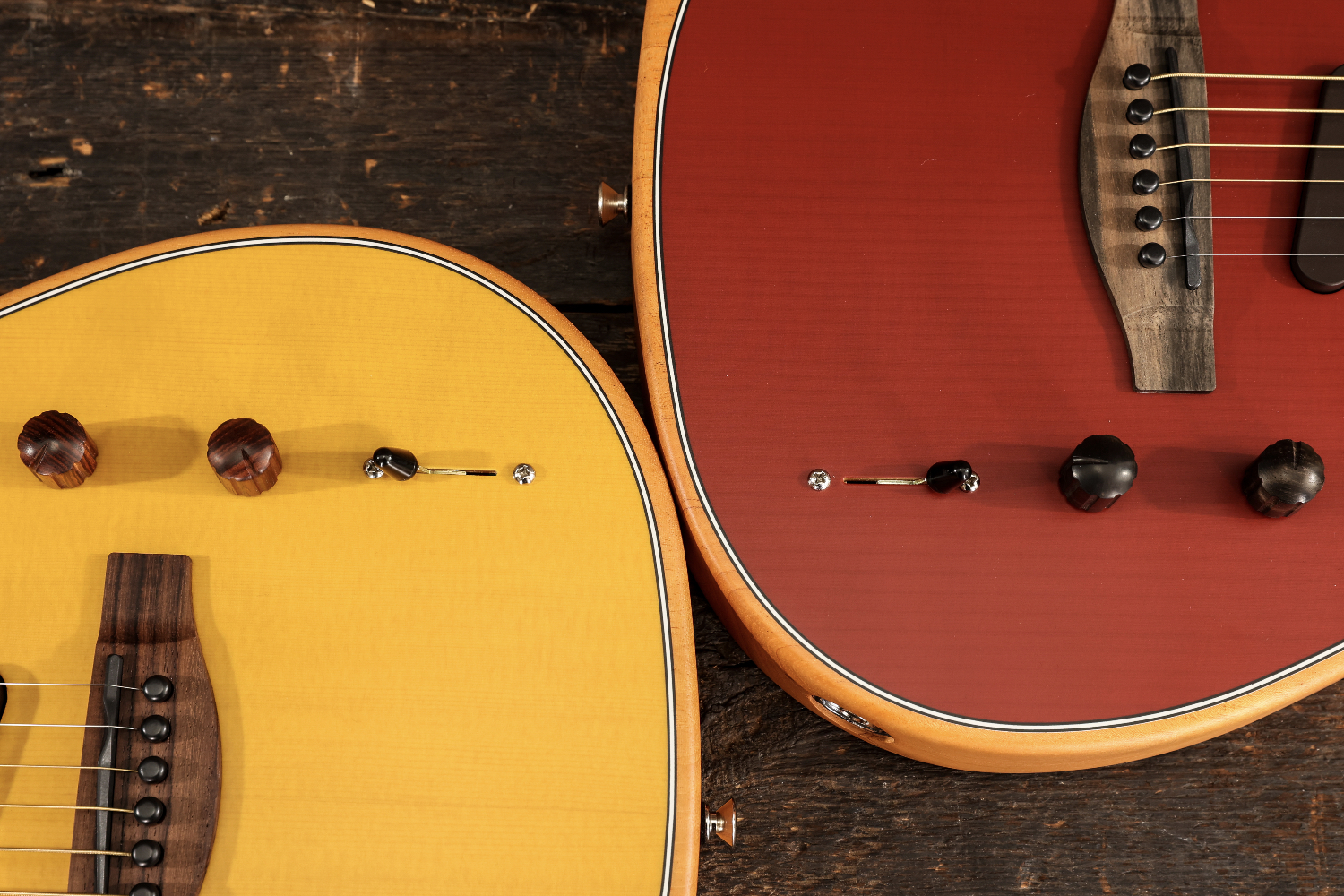
The American Acoustasonic Telecaster is equipped with a 5-way switch that allows you to flick between 5 pairs of electric/acoustic voices, meaning 10 sounds overall. The Acoustasonic Player II Telecaster only has a 3-way switch, meaning just 3 voice pairs for 6 “best of” electric/acoustic tones.
Whilst the Standard lacks this feature, all three models do come with a ‘Blend’ knob, just like the ‘Mod’ knob on the USA Acoustasonic, meaning that you can still achieve the unique hybrid sounds that make the Acoustasonic formula so intriguing.
Battery Power
| American | Player II | Standard |
| Lithium | 9V | 9V |
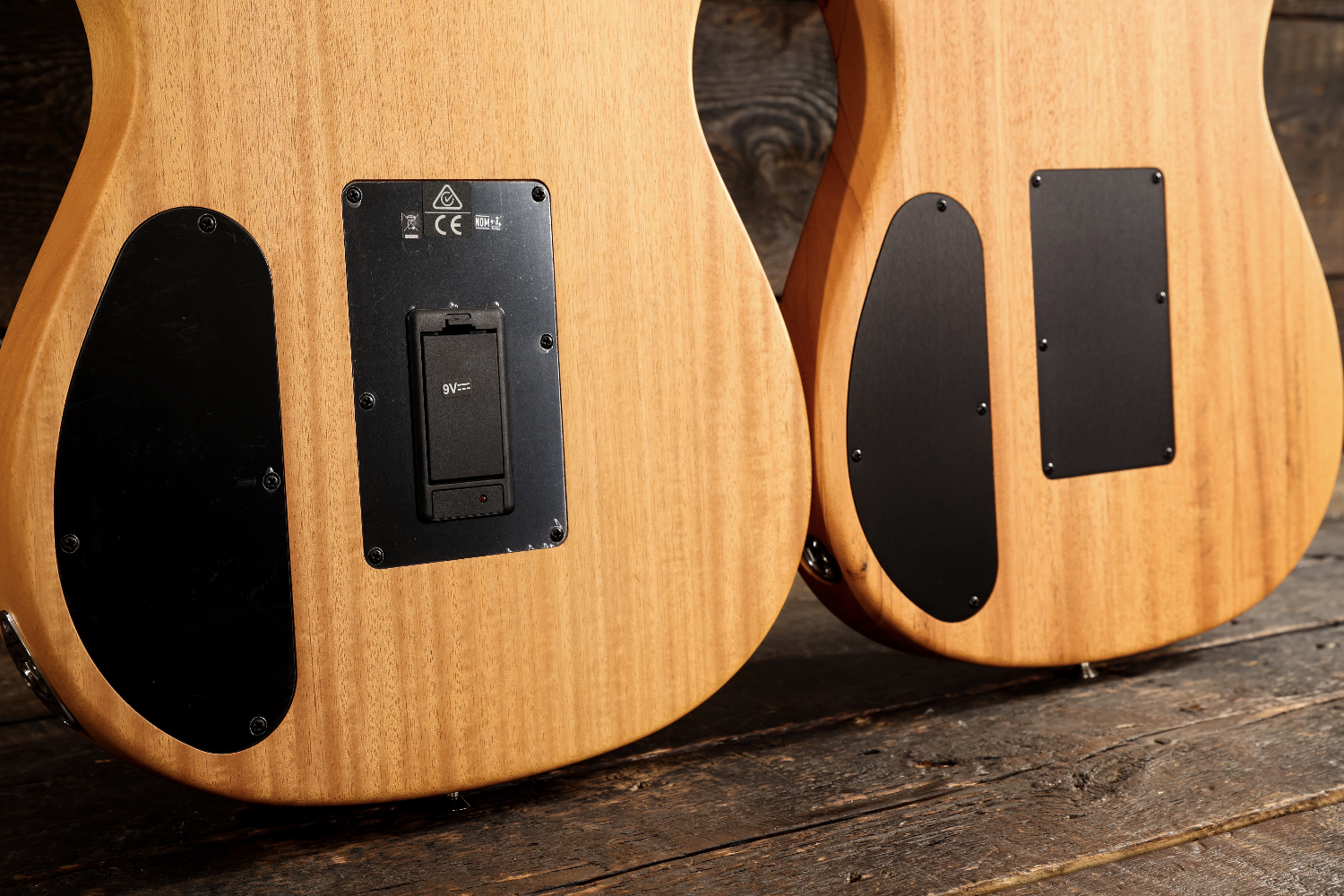
While some might say that the rechargeable lithium battery in the American Acoustasonic Telecaster is superior to the traditional 9V battery that powers both the Mexican and Indonesian models, it’s actually down to preference when you think about it. Both options offer around 20 hours of playing time, so if you’re a live performer, one charge/battery can cover a few gigs — no sweat!
The advantage of the American Acoustasonic’s lithium battery is that it’s built into the guitar and can easily be recharged via micro USB. There’s no need to buy a new battery every time it runs out of charge as with the Acoustasonic Standard and Player II. However, if you do run out of charge mid-way through a set, you’re kind of screwed! With the Mexican or Indonesian Acoustasonic, you can just grab a new battery and quickly swap it out. But if you’re not keen on buying a new 9V battery every time it goes flat, you can always get two rechargeable ones that you interchange. Simple.
Fingerboards
| American | Player II | Standard |
| Ebony | Rosewood | Rosewood |

The American model boasts an Ebony fretboard, while the Acoustasonic Player II and Standard comes with a Rosewood fingerboard. One isn’t better than the other though. This is, again, all down to preference both physically and sonically.
Ebony is considered a more “exotic” material that’s typically reserved for high-end guitars. It can feature a mesmerising grain, just like on the lower guitar neck pictured above, and is known to possess brighter tonal qualities. That doesn’t take anything away from Rosewood though. This is a widely-used timber used on instruments both affordable and expensive, often featuring a more consistently-dark grain. Some players also like the warmth it adds.
Which Guitar is Better?
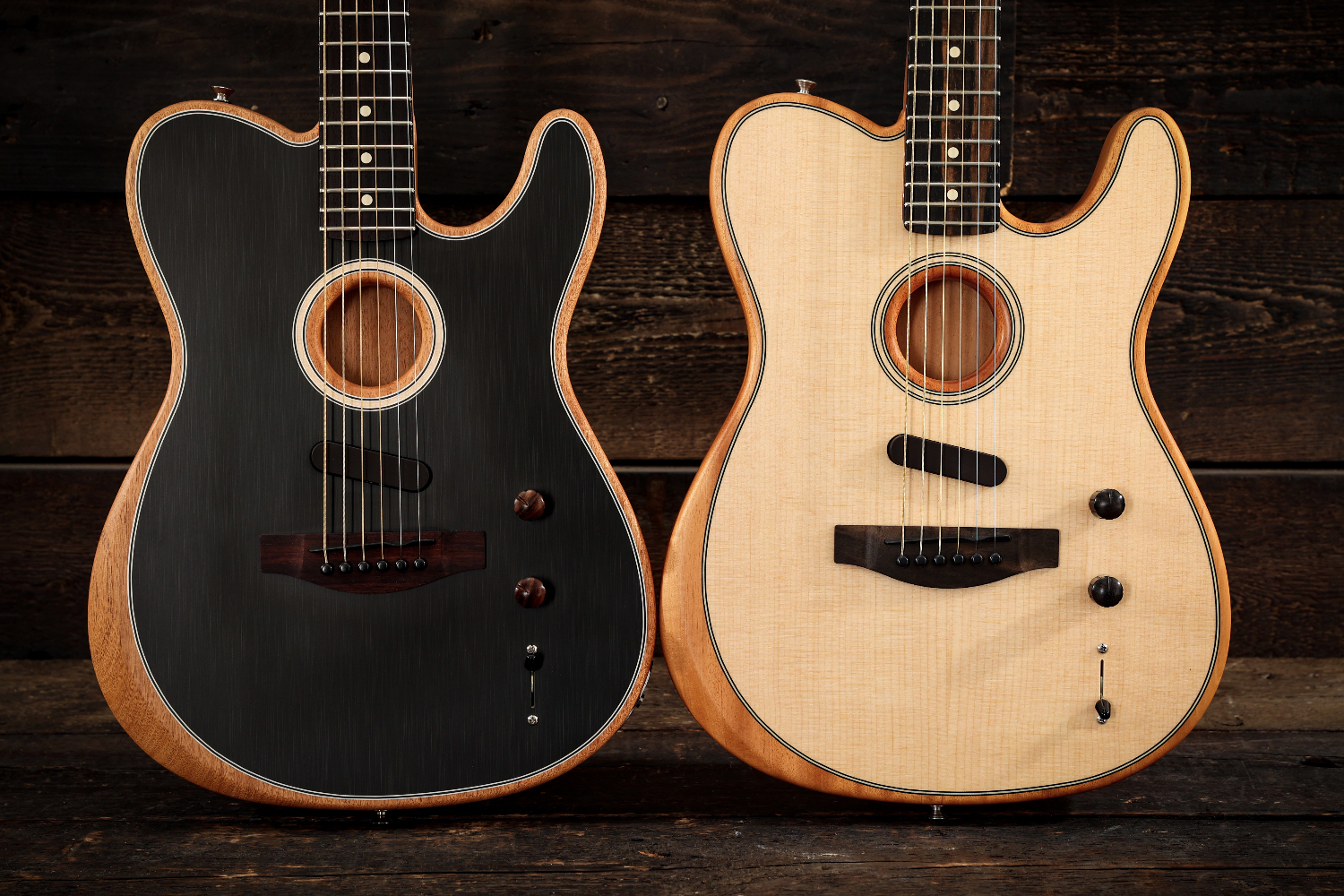
There really isn’t much to choose between Fender’s American and Player II Acoustasonic Telecaster guitars. They are incredibly similar in terms of build and feel, with only some slight electronic drawbacks on the Player II giving the USA model more appeal for musicians who prioritise versatility. But is the American Acoustasonic worth the extra money? Hard to say.
Conversely, if you’re a guitarist who has pondered the idea of owning an Acoustasonic for a while, but has been put off by the cost, then the new Acoustasonic Standard is a mouth-watering prospect. While it may lack some of the whistles and bells which come with the American and Player II, the Standard remains an affordable way to experience that classic Fender Feel.
Want to Learn More?
We hope that this blog has made it easy to discern the differences between Fender’s American, Player II and Standard Acoustasonic guitars. However, no amount of words can truly convey how these new models sound in action — so check out our Andertons TV video below!



Responses & Questions